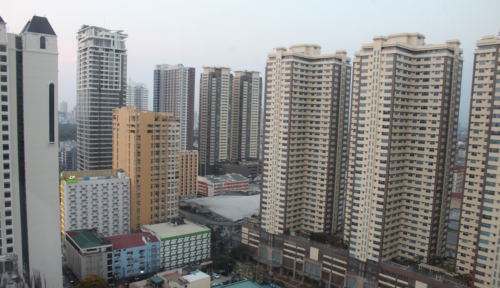How Can Cities Fuel International Economic Development?

In September, urban economists and international development experts gathered in Washington for the World Bank’s sixth annual Urbanization and Poverty Reduction Research Conference. The ambition: to explore how cities can contribute to vitality and economic prosperity around the world. Over the course of the day’s panels and presentations, I observed three key points emerging for urban policymakers in developing countries and for development partners at the World Bank, USAID and other outside groups.
- Urbanization is not often being recognized or framed as an engine for development, and thus many countries miss out on its potential.
To launch the day, a panel of economists and practitioners outlined urbanizations’ role in national economic development. The UN Economic Commission on Africa’s Edlam Yemeru highlighted that countries in Africa mostly see urbanization as a service delivery problem, a social safety issue, and a trend that needs to be slowed. For that reason, most are not managing urbanization in a way that takes advantage of all it offers for structural economic transformation and manufacturing industrialization. This oversight hampers rural development as strategically designed rural-urban value chains can improve agricultural productivity. Panelists’ recommendations included targeting strategic industrial sectors to grow urban jobs, investing in infrastructure that will make cities into what the country needs them to be in the future, fostering jobs that facilitate human capital development, and disaggregating data such that countries can see individual-city-level economic dynamics.
- Planning for and improving movement within, to, and between cities is critical for increasing national and urban-level productivity.
One of the main obstacles to growth in cities is congestion: people not being able to access places where they can earn the highest return for their time. Princeton Professor Leah Boustan paraphrased economist Michael Clemens in noting that where workers are blocked from reaching jobs that fulfill their highest potential, “millions of dollar bills are left on the sidewalk.” Congestion can block productivity both within cities and between regions. Boustan explained that the easiest way to see if congestion is blocking productivity is to evaluate if there are large regional disparities in incomes (e.g. between rural areas and cities or between neighborhoods within cities) after controlling for education levels. When countries have large rural-urban income gaps, governments can and should reduce barriers in their social service or labor market policies and even provide information on wage opportunities or other nudges to encourage people to migrate to wherever they could to earn the most money.
When it comes to improving within-city economic efficiency, urban design and transit matter the most. Contrasting two papers on Bus Rapid Transit (BRT) in Botoga and Jakarta, Leah Brooks showed historical urban layouts (spoiler: grids are more efficient than organic winding roads) can influence how efficiently transit can evolve along roadways, and thus how much cities will need to pay to manage congestion (e.g. expensive subways vs cheaper buses).
- Urbanization doesn’t improve gender equality without intentional planning, but it can.
Over the course of the day, experts repeatedly showed how urbanization manifests differently for men and women. Harvard’s Ed Glaeser presented research from Zambia that explained how rule of law disproportionately helps women in cities engage economically on an equal level with men. Rule of law, especially when enforced, in urban markets makes it safer for women to trust partners in trade deals by eliminating men’s advantage derived from the possibility of violence to renege on contracts.
Looking beyond the social mechanisms of gendered economic empowerment, the IADB’s Juan Pablo Chauvin shared research showing that booms or busts in urban female-dominated industries don’t result in increased urban in-migration but that shocks in male-dominated industries do. This indicates that women don’t have as much say over family migration and that governments’ place-based or industry-based investments can and do have extremely gendered benefits.
The conference agenda and video of some panels can be seen here.
Lydia Lo is a Research Analyst at the Urban Institute, a partner in USAID’s Communications, Evidence and Learning (CEL) project.

